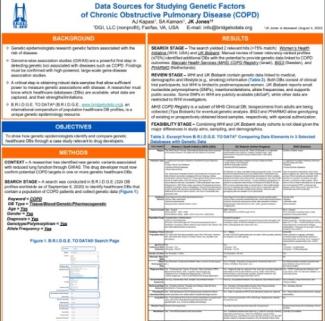In our latest newsletter we were thrilled to announce…
more »9/19/17: Our 6th Finnish database profile has been added
Since 1950, the National Institute for Health and Welfare Finland (THL) Register of Induced Abortions monitors and develops measures to promote the health and well-being of the population of Finland. Among other things, data include information on grounds for abortion - since 1955. Starting 1958, information is available on patient’s marital status, age, number of births and the number of procedures performed in each province.
9/6/17: Thank you to those who visited us at ICPE in Montreal
We were pleased to meet you all and hope you enjoyed your chance to conduct your own database search with B.R.I.D.G.E. TO DATA®. Don’t forget we are offering ISPE members a 10% discount for signing up by September 30, 2017*.
8/24/17: Profile of a US Military Health Services database just added.
We are pleased to include the Department of Defense (DoD) Military Health Services (MHS) Electronic Health Records Database profile into B.R.I.D.G.E. This database encompasses ~40-50 Million uniformed service members, retirees, and their family members across all states, territories, and regions of the US from 1990 through the present. There are ~10 Million active beneficiaries, and the database population is demographically similar to most US healthcare systems.
Homepage
25 for 25

Say goodbye to 2025 with 25% savings off your subscription this year!
(*For first-time general subscriptions
through December 31, 2025)
Benefits
Valuable resource for research
Global
Comprehensive
Structured
Timely
Access a specialized glossary
Contact our staff
Scan recent publications & administrative contacts for each database
Archive searches & create your own database collections
Search & Compare standardized profiles side-by-side
Access most up-to-date profiles verified by database managers
Identify population healthcare databases worldwide
Key Database Features
Types of databases include:
- Longitudinal EMR and claims
- Drug or disease specific cohorts
- Registries
- National surveys
- National surveillance systems
- Spontaneous reporting systems
- Tissue/Blood
- Genomic/Pharmacogenetic
~500 standardized database profiles
135 defined data fields
Profiles from 73 countries
Regularly updated
What our customers say

I highly recommend researchers in the field of pharmacoepidemiology, pharmacoeconomics, and related disciplines to use BTD to identify a suitable database which will meet the needs of their research. Also, pharmaceutical companies should look more often at the databases described by BTD if they are required to conduct PASS studies, or for those in medical affairs or clinical science who need additional information.

B.R.I.D.G.E. TO DATA is a unique one-stop for all databases you might need for any research purpose. A unique user-friendly directory to search for databases from all over the world, you can easily grasp what each database can offer you without wasting time on each one.

B.R.I.D.G.E TO DATA (BTD) is the prevailing resource for capturing detailed global metadata on real-world databases. The developers of BTD have spent meticulous thought into creating a process for collecting (and maintaining) data by building relationships with key data vendors across the world. With the breadth and magnitude of global real-world data available, it’s a testament to the scientific staff at BTD to successfully achieve such an ambitious undertaking.
8/14/17: Come see us at ICPE 2017 in Montreal, Canada, August 28-30
Our team will be at the 33rd International Conference on Pharmacoepidemiology and Therapeutic Risk Management (ICPE) in Montreal, Canada, August 28-30. Meet us at booth #18 and say hello.
8/11/17: New profile from Finland
Our 284th profile is the Care Register for Health Care, a continuation of the Finnish National Hospital Discharge Register (FHDR). One of the oldest individual level hospital discharge registers covering all of Finland, the Care Register covers data from 1969 to present and has more comprehensive data on the use of services and service users than the original FHDR.







